What do popsicle sticks and googly eyes have to do with textbooks? Well, here is where you are going to find out!
In music class we sing, we play games, we dance, we play instruments, we compose, we tell stories, and put on costumes….. BUT……
Sometimes we have to use the textbook.
In music class we use math manipulatives, we study maps, we construct models, read books, use comprehension strategies and Venn diagrams and we conduct science experiments…….. BUT
Sometimes we have to use the textbook.
In music class we have ever increasing access to a multitude of technological support. In addition to video streaming through Discovery, Youtube, and Teachertube, We now have digital formats of just about every printable resource.(Both my set of textbooks and current issues of Music Express Magazine have digital formats) Many of us have computers, projectors, iPods, iPads document cameras, activeboards and other devices that would allow for our students to “interact” with technology more easily than ever before… and every day there is new software developed just for us…….. BUT
Sometimes we have to use the textbook.
The textbook dilemma
The problem with textbooks
Textbooks are difficult to pass out because they are heavy. They require that procedures be set in place to handle them because they are expensive and easy to damage. Textbooks also demand a certain level of book navigation skill otherwise they take forever to use….. If you’re like me, time in music is VERY limited and I am always weighing the time-cost of the materials I choose and the procedures I set in place to manage them in order to increase the amount of time on task….Just like any other tool, sometimes textbooks don’t fit the job.
The blessings of textbooks
On the plus side, textbooks offer access to hundreds and hundreds of songs that have been chosen with care to details like pitch and rhythm, vocal range and all sorts of elements that should be considered when choosing music. If you use them as part of your instructional arsenal, you’ll know that the students get excited to use them because they are becoming as novel and as outmoded as that huge set of hard cover encyclopedia on your grandparents book shelf. Some of my students have limited opportunity to really dig into a book of any kind, so a textbook is a great gateway book…..
The tactile experience of holding a book and of touching a musical score is something that we miss out on when we limit our music score reading to projections or skill isolating manipulatives, (i.e. ones that always isolate rhythm or pitch away from words). Despite all of our technological advances, I don’t believe that choirs and orchestras in our communities will have the funds to go fully digital for a few decades yet, so teaching children how to interact with a real score is still a viable skill. The way that we become good at reading music is first by creating music and second by actually reading music. Putting “real” music in the hands of our students is just another manipulative for the tactile learner. Aren’t we ALL tactile learners?
So I ask myself…..
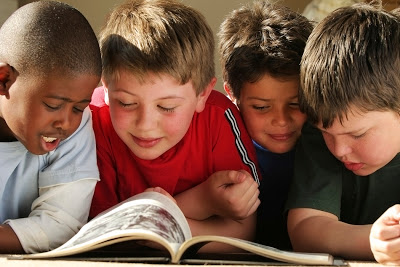 Do I want my students to spend 20 minutes finding page 325 or do I want my students to spend their time singing? The answer is YES to both! My students who struggle with basic book skills in my music class certainly struggle with those same skills in their homeroom. Finding a page number in any book is good practice on several different math skills. Having the class wait on you to find the page may be the first time in life that a student’s lack of basic “number sense” is really hindering them. So I say…. the more practice, the better…..
Do I want my students to spend 20 minutes finding page 325 or do I want my students to spend their time singing? The answer is YES to both! My students who struggle with basic book skills in my music class certainly struggle with those same skills in their homeroom. Finding a page number in any book is good practice on several different math skills. Having the class wait on you to find the page may be the first time in life that a student’s lack of basic “number sense” is really hindering them. So I say…. the more practice, the better…..
In 3rd-5th grade I refuse to tell my students the page number. Instead I give them the song title and I show them where they can find the index. Textbooks may be going the way of the dinosaurs, but even online information is indexed, so practice finding what you need is always good whether it happens online or in a textbook. After a reasonable amount of wait time, I let students help each other get to the page.
The Real World
During the last two weeks I literally had all of my Kinder-5th grade students in textbooks! I felt like I was drowning in them….. I got really tired of having the students put them back on the shelf, so I ended up with grade level stacks in various parts of the room. I don’t have kinder text books, but I want to teach proper handling of all books early, so we used our books to research Martin Luther King Jr. before learning our song.
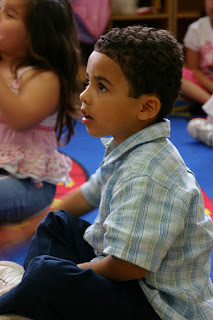 The MacMillan McGraw-Hill series has a WONDERFUL collection of songs about Martin Luther King Jr. as well as a fairly extensive collection of spirituals both written out for children AND authentic recordings. In my opinion it is one of the best aspects of the series.
The MacMillan McGraw-Hill series has a WONDERFUL collection of songs about Martin Luther King Jr. as well as a fairly extensive collection of spirituals both written out for children AND authentic recordings. In my opinion it is one of the best aspects of the series.
However, because this beautiful and meaningful music was chosen more for it’s cultural and historical relevance rather than for it’s melodic or rhythmic elements, in many cases the actual music I was asking my students to read was just beyond their reach. Their ability to sing and make the music beautiful outpaced their ability to actually read the musical score.
In 2nd grade things were tricky because the score layout stretched the song over two pages. The refrain was a the beginning which forced the two stanzas to straddle the page break. Going back and forth was tough for my second graders.
In 5th grade, we were working on the Follow the Drinking Gourd and The Ballad of the Underground Railroad which both have multiple verses. These students navigated the scores themselves fairly well even with multiple page turns back and forth between 3 pages, but with 5 stanzas there were layers of opportunity to be in the wrong place
The other element that made these songs in particular challenging for the students to track successfully was the tempo of the music. Each of these songs clipped along at quite a rate and students all over the room were catching up just to fall back behind again. I needed a solution!
Here is how it happened……
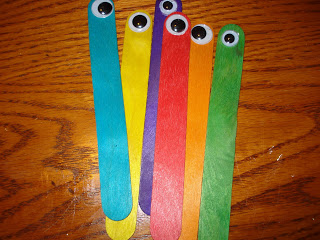 |
| Googly Eye Guys |
It was the first day of our block rotation and there I was……… surrounded by a group of 2nd graders who all had their very large textbooks finally open to page 345….. I wanted them to follow along in their books while we listened to the song we would learn…… Upon asking them to follow along, I got a wide variety of reactions. I had 2 students who immediately placed their pointer finger on the correct spot in the book and looked expectantly at me, begging me with their eyes to get on with it….. I had 10 students started flipping through their textbook looking at other pages, and I had 5 students lay down 2 of whom actually closed their eyes, and one girl opened up a free hair salon for all of her little friends. Nooooo! This will NOT do! As I desperately searched my mind for an instantaneous fix I remembered something my dear friend Pam Kang once showed me. Pam is a wonderful pre-K teacher and so she makes all sorts of cool pre-k stuff. She had made some little folder games for letter identification. Each folder came with it’s own Popsicle stick that had a googly eye glued to it. In my moment of REAL and fervent need, I remembered that over the summer I had made some of those Popsicle eye thingies, with the thought that they might be handy….. Well – today was the day!
Goggly Eye Guys to the Rescue!
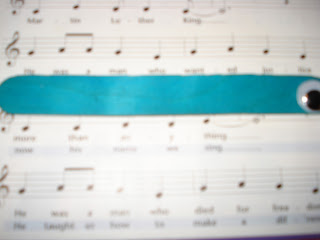 |
|
Students who were having trouble following ONLY |
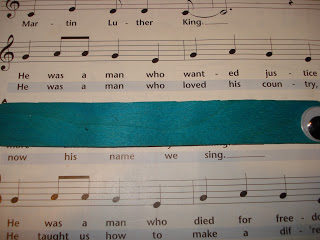 |
| As the song progressed, students were asked to “uncover” the portion of the score we were singing. |
There is absolutely nothing remarkable about the Googly Eye guys. They are large popsicle sticks with eyes glued onto them. Everything I use them for could be done without taking the time to glue on googly eyes, but the googly eyes are what make them special. I would say that the large popsicle sticks work better for textbook sized music because the size of the stick is almost the exact same size as a system of music in our books.
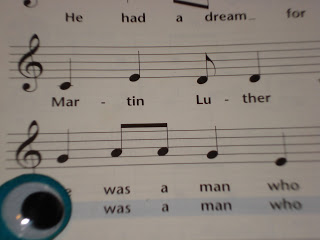 |
| I sometimes asked my students to find specific score elements. In this case I asked my students to put their “eye” on “so la la so mi” or “ta – titi – ta |
Sometimes these googly eye guys were named by the students who used them. One whose eye fell off was taken to the “googly eye” hospital for repair. A few of them even moonlighted as microphones, drum sticks and conductor batons for my more dramatic students. The best part was that they were universally useful with kinder through 5th grade students.
Also, for many of my special education students this was a great way to help them keep up with the other students. Not only did the googly eye guys help them track the music better, but it was also MUCH easier for them to glance at a neighbor and actually be able to see where they were. A model music reader didn’t have to go to waste just because their classmates couldn’t see their thinking. The Googly Eye Guy helped them highlight their good work.
Every musician gets behind or ahead occasionally. How do we teach pacing? How do we teach kids to catch up or to slow down? What aural cues do we listen for? It was amazing how much the addition of these Googly Eye Guys opened up that conversation among my students WAY more than I had anticipated. It was great to hear 5th graders discussing their “anticipation strategies” .
Here are some pictures from second grade with examples of how I used them. I don’t plan to ever use textbooks again without my Googly Eye Guys. Having the students “see” new things about the music with their googly eye guy fostered lots of great questions and we had a wonderful time seeing if we could find everything on our musical maps.
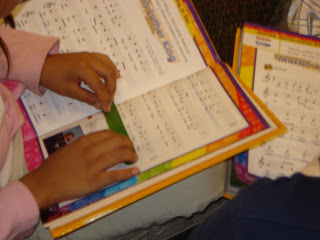 |
| The students would go back and forth between using the googly eye guys as a pointer or as a slider depending on the task |
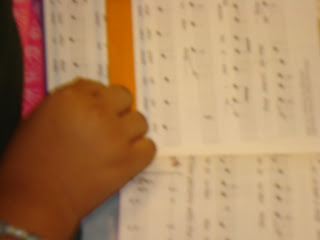 |
| Even reluctant students couldn’t resist reading with a goggly eye guy! |
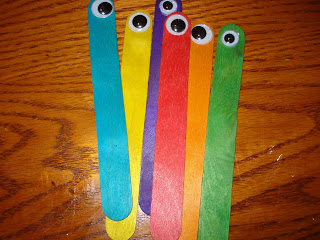
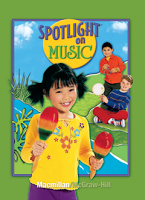
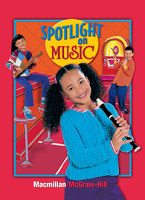


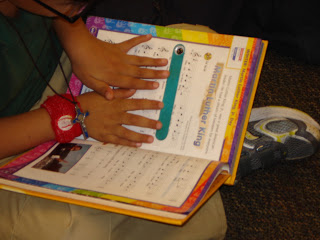

Love this idea! I will have to make some for my classroom….tracking music is a different challenge for a lot of our students, and I am sure this aide helps a lot! Thanks for the idea!
http://www.learnmemusic.com